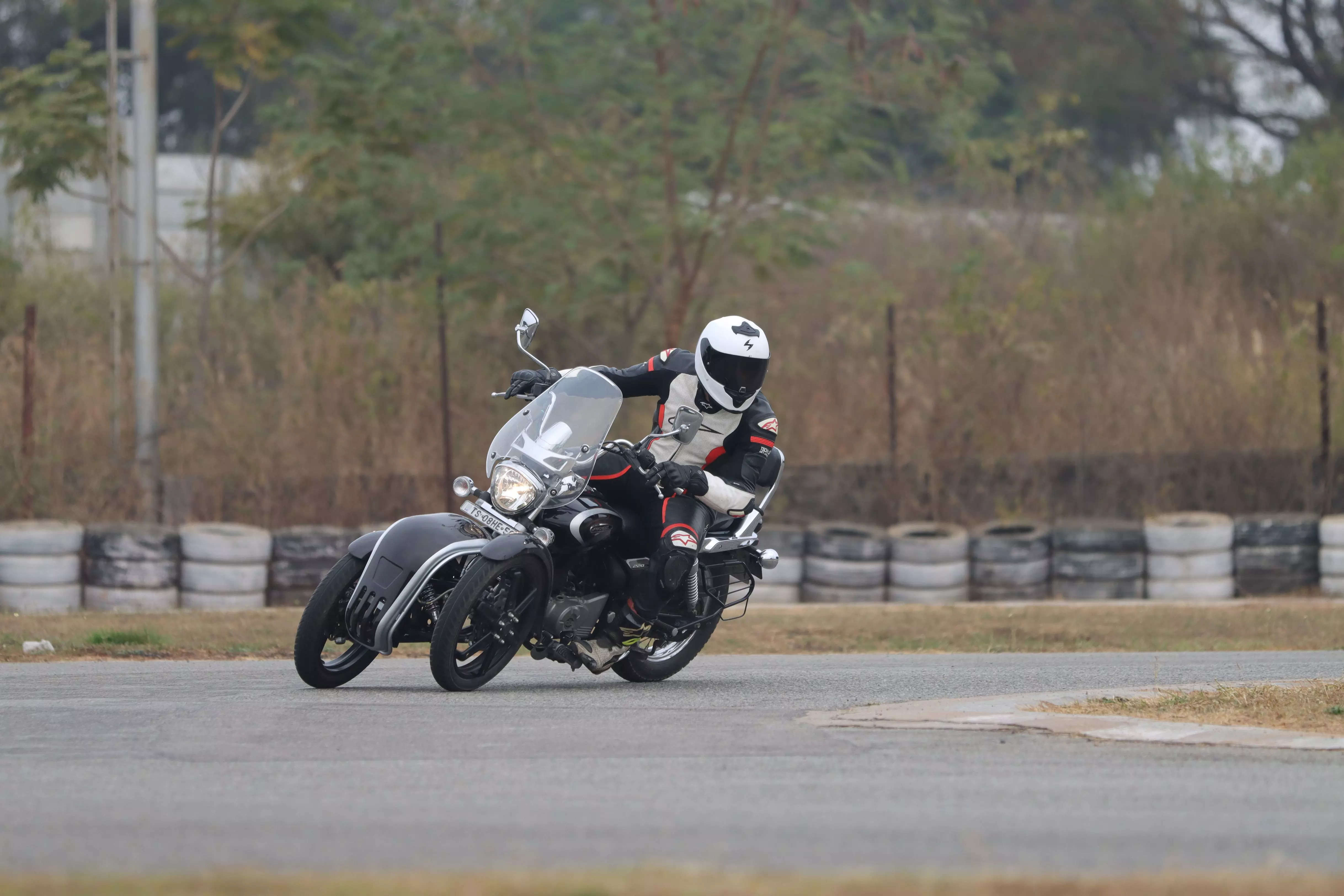
With nearly 13.5 million two-wheelers sold in 2021-22, India stands as the second largest two-wheeler market in the world. The scale of the Indian two-wheeler market gave YSR Prasad, a Hyderabad-based injection mould supplier, an idea to dabble with making systems that will convert a regular two-wheeler into a trike. A trike is a three-wheeled motorcycle or scooter.
After 7.5 years of R&D and engineering, and investment of INR 5 crore, the 59-year-old mechanical engineer-entrepreneur is now ready with the eighth iteration, also the production version, of a bolt on kit to convert a two-wheeler into a trike. Added stability and comfort are the key factors that consumers prefer a trike for.
It takes a little time to get used to riding a trike, but the difference can be felt after riding a couple of kilometres. The author rode a Bajaj Avenger converted into a trike. The bolt on kit uses a double wishbone system connected to the chassis through suspension bushes. The whole frame is connected to the vehicle chassis using a clamp.
A sway bar helps in both front tyres to have an equal grip level on the road, while a tilt lock feature allows the rider to lock the tilting mechanism for better stability in slow speeds.
“The system doesn’t require any modification to the vehicle as on the bottom the kit gets clamped to the chassis, and on the top it uses the holes in the handle assembly,” Prasad said. The kit adds 15 kg to a scooter, and 18-21 kg to a motorcycle.
With added weight, usually the fuel efficiency of a vehicle gets compromised. Prasad claims that a trike system could have a positive impact on the vehicle’s fuel efficiency. “The ground friction is reduced by about 20% compared to a regular two-wheeler, in the vehicle’s movement because of two wheels in the front. This could help increase fuel efficiency by up to 10%,” he said.
The kit cost ranges from INR 45,000 for a Honda Activa, to INR 1,08,000 for a Royal Enfield Classic. In a market like India where the trike concept is non-existent, it will take some strong efforts by Hyderabad Innovations to sell in large numbers. Prasad claims that the system once fitted will hardly have any maintenance cost. “All items are maintenance-free as all bearings are closed with oil seals and all ball joints have protective caps,” he added.
Considering that most two-wheelers in India are used for commuting, the braking system of the target models are also being modified to make it more user friendly. “We developed a hydro mechanical combination system for both the wheels, which can be operated by the left side brake lever,” Prasad said.
Prasad applied for 24 patents for the locally designed and developed trike system, and 13 got approved.
Categorisation in India
There’s no defined category of trikes in India yet, but according to an amended portion of IS 14272 which categorises different types of vehicles, ‘twinned wheels’ will be considered as one as long as both wheels are mounted on the same axle and ‘the distance between the centres of their areas of contact with the ground is equal to or less than 460 mm’.
Cruiser motorcycles are the popular candidates for a trike avatar, in mature markets like the USA. While in matured markets, the trike concept is mainly for leisure, in markets like India the value proposition may be different. With urbanisation and traffic congestion on the rise, and with the evolution of the motorcycle and scooters segments, a market like India could also see the adoption of trikes.
OEMs like Piaggio and Yamaha who have a presence in India also have at least one trike in their global portfolio. Peugeot Motocycles, which Mahindra & Mahindra offloaded a 80% stake recently, also has one. It is learnt that Piaggio had explored the feasibility of introducing its MP3 trike model in India some time ago.
Though not yet an OEM, Hyderabad Innovations would be sharing space with OEMs at the upcoming Auto Expo, to woo customers with its range of trikes. As an entrepreneur, Prasad has been in the injection mould business for 30 years now. The minimum price for his mould range is INR 12 lakh. Over the past 7 years, Prasad said, he has been ploughing in the profits to develop an indigenous trike system.
Some more time is needed to reap the yields. For now, the team at Hyderabad Innovations has to meet the challenge of getting what is perhaps India’s first indigenously developed trike system into the market.
Also Read:
















